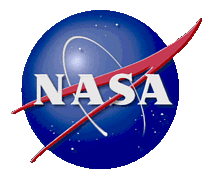Background and scope of effort
Note: The following discussion is taken directly from text in the proposal call: NASA ROSES 2013, A.29, with some relatively minor modifications to focus on the Atmosphere Team objectives.
A primary goal of NASA’s Earth Science Program is to use global measurementsto understand the Earth system and interactions among its components. To achieve this goal, a combination of shorter-term, process-oriented satellite measurements is complemented by longer-term satellite measurements of a limited number of environmental properties. For the latter, a key requirement is the provision of well-calibrated, multi-year and multi-satellite time series data and data products.
The Suomi National Polar-orbiting Partnership (Suomi NPP, formerly the NPOESS Preparatory Project) satellite was launched on October 28, 2011, to extend more than 30 high-quality time series data records initiated by earlier NASA satellites (i.e., the NASA Earth Observing System’s (EOS) Terra, Aqua, and Aura satellites). Its observations will allow scientists to extend a continuous record of satellite data of sufficient quality to detect and quantify global environmental changes. For the Atmosphere Team, Suomi NPP will continue measurements of such products as global cloud properties (cloud-top temperature/height/pressure, cloud thermodynamic phase, cloud optical thickness, and cloud effective particle size), aerosol properties over land and ocean, and clear-sky total precipitable water (TPW) records that began with the NOAA polar-orbiting satellite sensors with AVHRR (Advanced Very High Resolution Radiometer) and HIRS (High resolution Infrared Radiometer Sounder) in the late 70s.
Suomi NPP serves as a bridge between NASA's Earth Observing System (EOS) of satellites and the next-generation Joint Polar Satellite System (JPSS), a National Oceanic and Atmospheric Administration (NOAA) program that also will collect data for both weather and climate. As such, Suomi NPP also is providing pre-operational demonstration and validation risk reduction for the future U.S. Joint Polar Satellite System and sensor data and data products to the operational weather system to minimize the possibility of a gap in the operational weather mission. Suomi NPP is the first satellite designed to collect critical data to both improve weather forecasts in the short-term and increase our understanding of long-term climate change.
Over the past 10 years or so, the work of the NASA Suomi NPP Science Team (ST) focused primarily on evaluation of the sensor data records (SDRs) and environmental data records (EDRs) produced by the JPSS Program as to their suitability for Earth system science. These evaluations also included the raw data records (RDRs) and some of the intermediate products (IPs) produced by the JPSS Program. A few science team members worked on supporting minor in situ and on-orbit calibration/validation activities and research to establish the scientific foundation for new data products and applications. The evaluation of the RDR, SDR, EDR, and IP data products was completed in 2013 and reports were prepared by the various discipline groups. These reports summarized the character, quality, and suitability for Earth system science and applications of the RDRs, SDRs, EDRs, and IPs. These reports are available on-line at http://npp.gsfc.nasa.gov/teaminfo.html. Once at this site, you will find the various Science Team Discipline assessment reports. Here are links to the Cloud Products Report and the Aerosol Products Report.
These reports indicated that for most Earth observations the Suomi NPP instruments are making quality measurements (RDRs) that can be used to create data products suitable for Earth system science and applications, but that the SDRs, EDRs, and IPs varied greatly in their quality and suitability for Earth system science. For the aerosol and cloud products, a significant amount of work would be necessary to ensure an acceptable continuity data record. The reports pointed out that the SDRs are provided in formats, necessitated by the near-real time operational requirements for Suomi NPP data, that greatly complicate processing for global Earth system science uses. They emphasized the absolute necessity of reprocessing the time series data product for global change science. They also called for greater attention to on orbit and in situ calibration monitoring and correction, as well as data product validation. NASA accepted the scientific and technical findings in these reports. The recommendations for future actions led to the ROSES call in 2013, and the Atmosphere Team is part of the path forward.
Our Atmosphere Team will be making use of the state-of-the-art calibration of the various S-NPP sensors, new data formats for each sensor's Level 1B data, and more.

